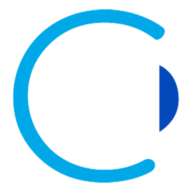TECLens Secures $9.3 Million to Revolutionize Vision Correction
February 12, 2025, 3:35 pm

Location: United States, New Jersey, New Brunswick
Employees: 10001+
Founded date: 1886
In a bold move that could reshape the landscape of vision correction, TECLens, a clinical-stage ophthalmic medical device company based in Stamford, Connecticut, has successfully raised $9.3 million in Series A funding. This round was co-led by industry giants Johnson & Johnson Innovation – JJDC Inc. and Yonjin Capital, with additional backing from Rimonci Capital and Sunmed Capital. The infusion of capital aims to propel the clinical development of TECLens' innovative non-incisional refractive correction procedure, which harnesses the power of corneal cross-linking (CXL) technology.
TECLens is not just another player in the crowded field of ophthalmology. It stands at the forefront of a revolution in vision correction. The company’s proprietary technology, known as Quantitative Corneal Cross-Linking (qCXL), offers a fresh perspective on how to treat refractive errors. Unlike traditional methods that rely on riboflavin and ultraviolet light to strengthen the cornea, qCXL takes a more personalized approach. It utilizes a computational biomechanics model tailored to each patient’s unique eye structure, delivering a pre-calculated pattern and dose of UV light.
Imagine a sculptor shaping a masterpiece. Each stroke is deliberate, calculated, and precise. That’s how TECLens envisions its treatment process. The CXLens device, designed for use in examination rooms, provides real-time feedback through an onboard ultrasound sensor. This ensures that the treatment adheres to the pre-planned parameters, enhancing precision and safety. It’s a dance of technology and biology, where every move is choreographed for optimal results.
The potential applications of this technology are vast. TECLens is initially focusing on presbyopia, a common vision disorder that affects millions as they age. However, the horizon extends far beyond. Future studies may explore its effectiveness in treating pediatric progressive myopia, low-order adult myopia, hyperopia, and astigmatism. Each of these conditions presents unique challenges, but TECLens is poised to tackle them head-on.
The clinical studies are not just a formality; they are a critical step in validating the technology. The company has already demonstrated the effectiveness of its CXLens device in patients with keratoconus, a condition that causes the cornea to thin and bulge. This early success lays a solid foundation for broader applications. The goal is clear: to provide a non-invasive, cost-effective solution for those suffering from vision disorders.
Investors are taking notice. The backing from established names in the industry signals confidence in TECLens’ mission. The support from both seasoned veterans and newcomers reflects a collective belief in the transformative potential of qCXL technology. This funding is not just a financial boost; it’s a vote of confidence in a vision that could change lives.
In the world of ophthalmology, innovation is key. Traditional refractive surgeries often come with risks and complications. TECLens offers a safer alternative. The non-invasive nature of qCXL means less downtime and fewer side effects. Patients can expect a smoother journey toward clearer vision, without the need for incisions or extensive recovery periods.
The implications of this technology extend beyond individual patients. As the global population ages, the demand for effective vision correction solutions will only grow. TECLens is positioning itself to meet this demand head-on. By focusing on non-invasive techniques, the company is not just addressing current needs but anticipating future challenges in eye care.
The road ahead is filled with promise. TECLens is set to embark on a series of clinical trials that will further validate its technology. Each trial is a stepping stone toward a future where vision correction is accessible, safe, and effective. The company’s commitment to innovation is unwavering, and its vision is clear.
As TECLens moves forward, it carries the hopes of millions who struggle with vision disorders. The journey from funding to clinical application is fraught with challenges, but the potential rewards are immense. With the right support and a steadfast focus on innovation, TECLens could very well become a beacon of hope in the field of ophthalmology.
In conclusion, TECLens is not just raising funds; it’s raising the bar for vision correction. The $9.3 million Series A funding is a testament to the belief in a brighter future for eye care. With its cutting-edge technology and commitment to patient-centered solutions, TECLens is poised to make waves in the industry. The world is watching, and the future of vision correction looks promising.
TECLens is not just another player in the crowded field of ophthalmology. It stands at the forefront of a revolution in vision correction. The company’s proprietary technology, known as Quantitative Corneal Cross-Linking (qCXL), offers a fresh perspective on how to treat refractive errors. Unlike traditional methods that rely on riboflavin and ultraviolet light to strengthen the cornea, qCXL takes a more personalized approach. It utilizes a computational biomechanics model tailored to each patient’s unique eye structure, delivering a pre-calculated pattern and dose of UV light.
Imagine a sculptor shaping a masterpiece. Each stroke is deliberate, calculated, and precise. That’s how TECLens envisions its treatment process. The CXLens device, designed for use in examination rooms, provides real-time feedback through an onboard ultrasound sensor. This ensures that the treatment adheres to the pre-planned parameters, enhancing precision and safety. It’s a dance of technology and biology, where every move is choreographed for optimal results.
The potential applications of this technology are vast. TECLens is initially focusing on presbyopia, a common vision disorder that affects millions as they age. However, the horizon extends far beyond. Future studies may explore its effectiveness in treating pediatric progressive myopia, low-order adult myopia, hyperopia, and astigmatism. Each of these conditions presents unique challenges, but TECLens is poised to tackle them head-on.
The clinical studies are not just a formality; they are a critical step in validating the technology. The company has already demonstrated the effectiveness of its CXLens device in patients with keratoconus, a condition that causes the cornea to thin and bulge. This early success lays a solid foundation for broader applications. The goal is clear: to provide a non-invasive, cost-effective solution for those suffering from vision disorders.
Investors are taking notice. The backing from established names in the industry signals confidence in TECLens’ mission. The support from both seasoned veterans and newcomers reflects a collective belief in the transformative potential of qCXL technology. This funding is not just a financial boost; it’s a vote of confidence in a vision that could change lives.
In the world of ophthalmology, innovation is key. Traditional refractive surgeries often come with risks and complications. TECLens offers a safer alternative. The non-invasive nature of qCXL means less downtime and fewer side effects. Patients can expect a smoother journey toward clearer vision, without the need for incisions or extensive recovery periods.
The implications of this technology extend beyond individual patients. As the global population ages, the demand for effective vision correction solutions will only grow. TECLens is positioning itself to meet this demand head-on. By focusing on non-invasive techniques, the company is not just addressing current needs but anticipating future challenges in eye care.
The road ahead is filled with promise. TECLens is set to embark on a series of clinical trials that will further validate its technology. Each trial is a stepping stone toward a future where vision correction is accessible, safe, and effective. The company’s commitment to innovation is unwavering, and its vision is clear.
As TECLens moves forward, it carries the hopes of millions who struggle with vision disorders. The journey from funding to clinical application is fraught with challenges, but the potential rewards are immense. With the right support and a steadfast focus on innovation, TECLens could very well become a beacon of hope in the field of ophthalmology.
In conclusion, TECLens is not just raising funds; it’s raising the bar for vision correction. The $9.3 million Series A funding is a testament to the belief in a brighter future for eye care. With its cutting-edge technology and commitment to patient-centered solutions, TECLens is poised to make waves in the industry. The world is watching, and the future of vision correction looks promising.
